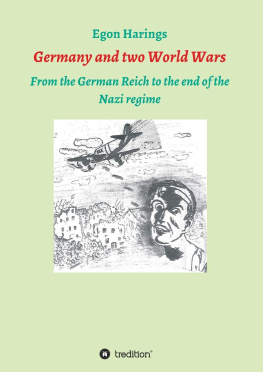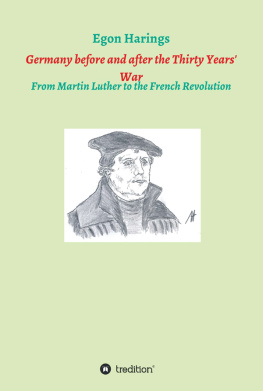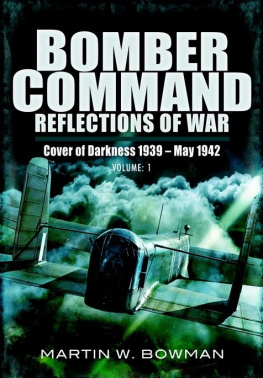Insights on H. W. _Buzz_ Bernard's When Heroes Flew
Insights from Chapter 1
#1
In 1928, Egon Richter,17, and his father, Gerhard, traveled to the Hunsrck in Germany to hunt wild boar. When they came across an old boar that had challenged them, Egon shot him. His father told him not to, but Egon felt he had to.
#2
The B-24 bomber was sent to Benghazi, Libya, to join up with a small bomber force already in place there. The reason for their deployment had been rather obscure, but they were to participate in an operation involving experimental bombing tactics.
#3
Al and Sarah had been married just after hed joined the Army in mid-1941. He had thought if he volunteered early hed have a better chance of doing what he wanted, being an aviator. His thoughts turned out to be correct.
#4
He couldnt guarantee that he would return, but he knew he had to. He loved Sarah, and that was all the incentive he needed. He would come home somehow.
#5
Als bomber, Oregon Grinder, was named after the state he came from. It was christened by Sorey, the pilot, and the three members came up with the concept of the cartoon.
#6
The crew of the Oregon Grinder landed in Benghazi. The major who greeted them told them that the country was full of scorpions and flies, but that they should check their boots in the morning before putting them on.
Insights from Chapter 2
#1
The attack on the train sheds near Messina on Sicily was a low-level attack using just a handful of bombers. The bombs didnt detonate, and the crew was surprised that they werent high-altitude bombers.
#2
The Liberators launched at midnight. Al flew just above the waves, and he and Sorey struggled to see each other through the clouds. When they popped out, they found themselves still cloaked in lightless gloom.
#3
The air raid on Benghazi was canceled because of low clouds and fog. The airmen were not pleased, but they had to obey orders. The lieutenant who wanted to repeat the raid on Crotone was planning on taking it to the group commander, K. K. Compton, and General Ent, the bomber force commander.
#4
Al was planning on hitting up Compton and Ent next, but he wanted to return to England with an attaboy from the bomber chief.
#5
The second raid on the Messina rail yards was led by Lieutenant Flavelle. The four-plane flight repeated the route taken by Major Appold, refueling in Malta, then flying around Sicily to the west and north. They crossed over the north coast of Sicily, skipped over a low, forested ridge, and rammed the sheds.
Insights from Chapter 3
#1
After the bombing of the Messina rail yards, the pilots were praised by the commander of the 376th Bomb Group, K. K. Compton. But Al had a feeling they werent going to be in England for long.
#2
Al and George were on the ground in Libya, waiting for the airmen to get some beer. Al hated the desert, and he hated being back in Libya so soon after their visit a few months earlier.
#3
George and Al were discussing the possible targets for the mission. George thought that the targets might be in a city, where they would have to avoid killing civilians, or a well-defended target.
#4
The idea of flying low to the ground was terrifying to many of the pilots, including Al. They all had the same fears, but they came through every time because they were the best trained in the world and because they cared for each other like brothers.
#5
Al rested on the cot in his tattered tent that evening. He had so many thoughts and memories of Sarah, and he hoped they would stay with him forever. But he knew they wouldnt, and he was okay with that.
Insights from Chapter 4
#1
Egon Richter, a German pilot, landed his single-engine Messerschmitt fighter at a German air base near Kalamaki, Greece, in the late morning. He was greeted by Oberstleutnant Rdel, who gave him a recommendation from Generalmajor Adolf Galland.
#2
Egon was a fighter pilot, battle-tested and experienced. The Luftwaffe was losing too many men with such credentials. They were replacing them with youth and enthusiasm, not know-how and skill.
#3
Egon was given the task of taking care of the new flyers, and leading them into battle. He was told that if he could help keep a few of them alive, he had done his job as a Luftwaffe officer honorably.
Insights from Chapter 5
#1
The German military, air force, and navy fought fiercely to keep the country from being brought to its knees. But they were serving a brutal police state.
#2
The pilots and copilots were assembled in a briefing tent. Lieutenant Colonel Addison Baker, the commander of the Traveling Circus, explained that the raid on Ploesti was important. Not all of the pilots would make it back, especially if they had suffered battle damage.
#3
The bombing of Ploesti was a low-level attack. The defenses of the refinery were built around the idea of attacks coming from the east and northeast, which was not the case.
#4
The overall attack force was led by Colonel K. K. Comptons Liberandos. They were going to attack the east side of Ploesti, near the Concordia Vega Refinery, and destroy Target White One.
#5
The plan was to attack from the west, which was the least expected direction. The planners tried to choose clearly identifiable features for the IPs, making it as easy as possible for the pilots to find them.
#6
The pilots were told that the penalty for not completing the mission would be severe. They were also told that the camp would be put on quarantine starting the next day, and that they should not come or go until after the attack.
Insights from Chapter 6
#1
Al was asked to assess the readiness of the crews for the mission. He said that they were tough men, and he didnt mean in a brutal way. He meant in a manner that made them determined, tenacious, and fearless.
#2
Al loved his crew, and was excited to bring them home. But he knew the realities of war, and wanted to preserve them for when they returned to their families.
#3
The next morning, Oregon Grinder, with Colonel Timberlakes Liberator on the left, roared toward the desert target at over 200 miles per hour. Should be on-target in fifteen seconds, George, the navigator, said over the interphone from where he crouched in what was the bombardiers usual position.
#4
The team decided to use poles to mark the targets for the bombers. The captain made sure this was done, and the team made another recon mission the next morning.
#5
The next morning, Al and Timberlake flew over the desert again. This time, they were able to see the dummy refinery layout. But some Bedouins came by in the middle of the night and swiped the poles that were supposed to mark the layout.
#6
The third trial run was successful. The Bedouins left the strips of tin in place, and when Al returned to Benghazi, he found Baker waiting for him. The black speck on the western horizon grew larger as the B-24 made an extremely low approach.
Insights from Chapter 7
#1
The two men walked toward the B-24. The pilot, who did not fall into the male category, apologized for the deception. He said hed be happy to fly with either of them.
#2
Egon Richter was a pilot in the Luftwaffe, and he was billeted with a Greek couple in Elliniko. He made sure to be compassionate with his hosts, even if they hated having boarders.
#3
In 1938, Egon welcomed his old friend Otto Meyer to his home in Zell, a small town on the right bank of the Mosel River in west-central Germany. They had known each other since they were young.






